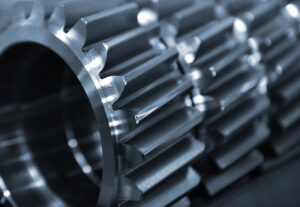Gear Failure Analysis to Maximize Reliability & Uptime
Gear Failure Analysis and Prevention Guide Gears are the backbone of mechanical transmission systems across industries. When gear failures occur, they disrupt operations, increase downtime, and inflate maintenance costs. That’s why understanding gear failure analysis and prevention is essential to enhancing reliability and operational efficiency. Understanding the Causes of Gear Failures Wear and Surface Fatigue […]

Gear Failure Analysis and Prevention Guide
Gears are the backbone of mechanical transmission systems across industries. When gear failures occur, they disrupt operations, increase downtime, and inflate maintenance costs. That’s why understanding gear failure analysis and prevention is essential to enhancing reliability and operational efficiency.
Understanding the Causes of Gear Failures
Wear and Surface Fatigue

One of the most common causes of gear failure is surface fatigue, which results from repeated stress on gear teeth. This fatigue leads to pitting, scoring, or spalling, all of which deteriorate gear performance.
Pitting and Scoring Effects
Pitting forms craters on the gear box surface, while scoring appears as scratches due to poor lubrication. Both conditions reduce load-bearing capacity and increase the risk of breakdowns.
Proactive Maintenance Insight
The key to preventing surface damage is timely lubrication and condition monitoring. Using high-quality oils and maintaining cleanliness significantly extends gear life.
Bending Fatigue and Crack Propagation
When gear teeth bend under heavy or cyclical loads, microscopic cracks form, eventually leading to tooth failure.
Design Improvements for Longevity
To counter bending fatigue, engineers use advanced materials and tooth designs to distribute stress more evenly.
Real-World Application Note
Heat-treated gears with optimized root profiles perform better in high-load conditions, reducing the likelihood of crack development.
Corrosion and Contamination
Gears exposed to moisture or chemicals may corrode. Contaminated lubricants also introduce abrasive particles that accelerate wear.
Prevention Techniques
Implementing sealed systems and filtration solutions can protect gears from corrosive agents and particulate contamination.
Best Practices for Preventing Gear Failures
Conduct Routine Inspections
Visual and instrument-based inspections should be scheduled regularly. These inspections can reveal misalignment, unusual vibrations, or thermal changes.
Key Tools to Use
Thermal cameras and vibration sensors are effective for detecting early signs of failure.
Ensure Proper Lubrication
Lubrication minimizes friction and wear. Using the right lubricant for your operating conditions is essential.
Factors to Monitor
Oil viscosity, temperature, and cleanliness are all critical for maintaining lubricant effectiveness.
Maintenance Team Tip
Train your staff to recognize signs of oil degradation and replace lubricants before performance drops.
Focus on Alignment and Installation
Incorrect gear alignment during setup or repair causes edge loading and premature wear.
Alignment Best Practices
Use laser alignment tools to achieve precise installation and reduce mechanical stress.
Choose the Right Gear Materials
Material strength and surface hardness directly affect gear life.
Common Choices
Carburized or nitrided steel offers strong resistance to fatigue and wear.
Techniques for Gear Failure Analysis
Visual and Microscopic Inspections
Look for physical signs like cracks, discoloration, or tooth deformation.
When to Use Microscopy
Microscopic inspections help identify early fatigue and crack formation.
Oil Analysis
Analyze used oil samples to detect wear metals and contamination.
Spectrometric Analysis Benefit
Presence of iron or aluminum in oil indicates internal wear, allowing preventive measures.
Finite Element Analysis (FEA)
FEA simulates gear operation to locate stress concentrations.
Why It Matters
Understanding stress distribution helps refine gear geometry for improved performance.
Leveraging Digital Tools for Gear Maintenance
Predictive Maintenance Through IoT Sensors
Install IoT sensors to monitor gear vibration, temperature, and oil quality in real time.
Real-Time Insights
These tools help detect faults early, preventing catastrophic failures.
Integration Tip
Use cloud-based dashboards to centralize data and schedule predictive actions.
The Importance of Skilled Operators
Reduce Errors Through Training
Human mistakes, such as overloading or improper maintenance, can cause gear damage.
Continuous Education
Provide your staff with routine training on system handling and emergency protocols.
Gear Reliability Starts with Proactive Strategy
Mastering gear failure analysis and prevention ensures long-term reliability, safety, and performance. By understanding root causes, implementing preventive maintenance, and using modern tools like FEA and predictive monitoring, industries can significantly cut downtime and boost productivity.
Final Takeaway
Don’t wait for gears to fail—analyze, prevent, and optimize.

